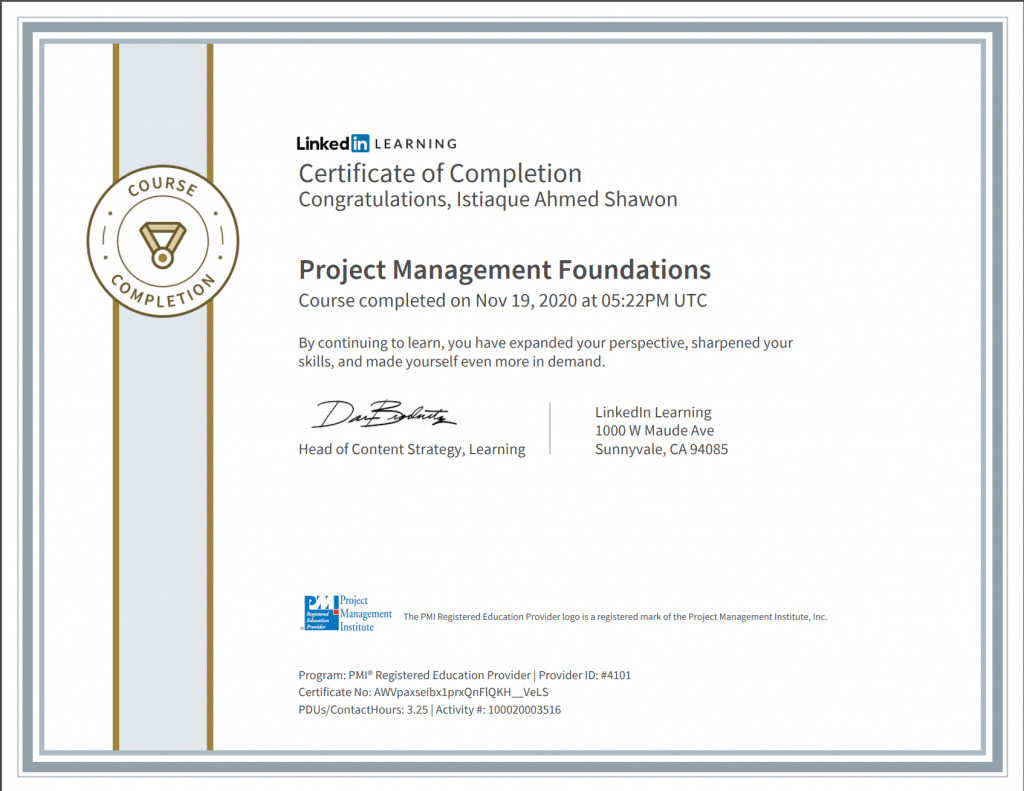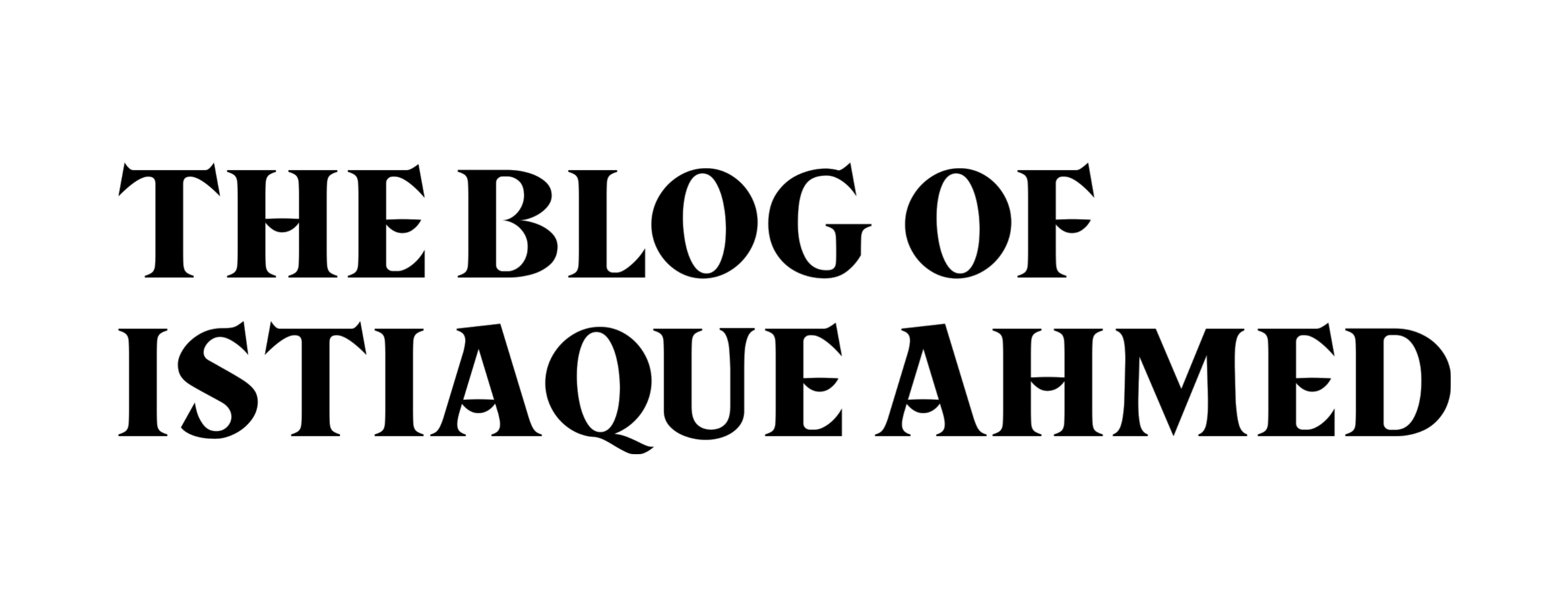ABC for a Project Manager:
Project is a temporary endeavour that has a specific and unique goal, and usually a budget. Project is done when successfully hand over to operation. The result could be product, service or anything as an outcome. Whether you want to solve a problem or pursuing an opportunity, you must have a strategy.
When you are thinking to develop a strategy to solve any particular issue, then keep in your mind that it covers;
– Specific requirements
– Deliverables and
– Scope
And ask yourself immediately that what is the plan? A plan must have;
– List of tasks
– List of required resources including cost
– Schedule and
– Process
Project Management Cycle:
Initiating> Planning>Executing>Monitoring and Controlling> Closing process
Initiating:
– Define your project
– Assess the scope
– Determine resource needed
– Identify stakeholders
– Ask for approval
Planning:
– What are we going to do?
– How are we going to do?
– How will we know when it’s done?
Executing:
– Plan
– Resource allocation
Monitoring and Controlling:
– Check the progress of the project
– Compare with the plan
Closing Process:
– Get the client/ management to accept project is complete
– Document project performance
– Close contracts
– Help resources move to next assignment
And to know when the project is done, define a few success criteria. Criteria will be Quantifiable, measurable results that show that the project is complete. Project deliverables are measured by success criteria. Delverables can be tangible like a new product, new service. They can also be more abstract like the improved result. Need to find out success criteria for individual deliverables. Check list is;
– Identify end deliverables.
– Identify intermediates deliverables.
– Define clear and quantifiable success criteria.
As a project manager you have to do;
– Directs people’s tasks
– Track the project’s progression
– Aids in course corrections
– Communicate progress with stakeholders
So, you should have the following skills set:
– Technical skills (i,e; work on gantt Chart)
– Business Expertise (What it does, how is doing)
– Problem Solving
– Interpersonal Skills
Project Management Approach:
Traditional or Agile Project Management Approaches?
Traditional Approach (Waterfall approach) (Solution is clear): Works well when goals are clearly defined. Scope and deliverables are clear cut.
– Simplicity
– Low risk
– Familiar technology
– Experienced resources
Agile Approach (Solution is not clear): Iterations produces deliverables at regular intervals. Value delivered sooner—small, experienced and independent team.
– Planning: High-level plan first then detailed plan in every iteration.
– Executing: Execution is easier because of working on one iteration at a time with small and experience people.
– Monitoring and control: closely, faster, and more frequently.
Each iteration has its own closing process for specific deliverables. When the final iteration is accepted, you can close the entire project.
Types of Organizational Structure:
There are three types of organizational Structure
Hierarchy: CEO> Functional Manager> Staff
Matrix: CEO> Functional Manager> Staff
Projectized: CEO> Project Manager> Staff
Hierarchy Organization: Difficult for the project to get succeed.
– Project manager (PM) has almost no authority
– Functional manager in charge of the budget
– Resources do not report to PM
– PM has divided responsibilities
Matrix Organization: They support more than pure hierarchy organization.
– PM has some authority
– Resources report to functional and project managers
– PM and staff work full time in a strong matrix
Projectized Organization: All about project
– PM has almost complete authority
– Resources are dedicated to project
– PM and admin staff work full time
Every organization has it’s own culture. Organizational culture is a set of factors that guide people’s behaviours and decisions within an organization. Organizational culture affects projects and project management.
The three significant components of organizational culture are:
– Mission statement
– Leadership
– Work environment
Factors to navigate culture are:
– Know the boundaries
– Respect change management
– Respect local culture
The project:
To initiate a project:
– Assign a project manager (Sometimes after the approval of project)
– Prepare a project charter
– Identify stakeholders (Customer, project sponsor, department, team members)
The project customer is a person or group with a problem to solve. They are doing three tasks;
– Funds the project
– Informs what needs to be done
– Approves deliverables
Project Goal:
– Define the result
– Solves the problem
– Takes advantage of the opportunity
Project Statement:
– Clearly defines the problem or opportunity
Project Objectives: Should be specific, measurable, achievable, realistic, and time-related.
– Business objectives support your organizational goals. Example: Increase market share to 25%. Provide world-class health care.
– Financial objectives are all about money. Example: Increase revenue by 15%. Cut cost by 10%.
– Quality objectives specify how useful a resource needs to be. Example: Decrease staph infection by 80%. Decrease readmittance by 75%.
– Technical objectives are similar to technical specifications for equipment. Example: Introduce mobile equipment for the hospital, ambulance and emergency site.
Once goals and objectives identified then, then work on benefits analysis with appropriate stakeholders to align with organizational mission and strategy.
Develop Strategy for the project:
To choose a strategy:
Brainstorming:
– Identify possible strategies
– Allow free flow of ideas
– Avoid evaluation
Strategy decision matrix:
– Is the strategy feasible?
– Is the risk acceptable?
– Does the strategy fit the culture?
Gather requirements. Better to explain by an example.
Objective: Decrease rescheduling procedure by 75%.
Requirements:
– Simultaneously schedule staff, equipment, and facilities for a procedure.
– Search for next time slot that all selected items are available.
Challenges to do this:
– Incorrect requirements
– Inconsistent requirements Missing requirements
– Unnecessary requirements
– Customer don’t commit time
Techniques to gather requirements:
– Interview of stakeholders
– FGD
– Observation of how people work
– Survey
– Analyze existing documents
Better to have project scope in writing:
– Helps avoid scope creep
– Reminds stakeholders what was agreed upon.
– It includes; goals and objectives, within scope, out of scope, deliverables, success criteria, assumptions, risk, and constraints.
Components of a project charter:
– Project name
– Purpose
– High-level project description
– High-level milestones schedule
– Rough-cost estimate
– Stakeholders
– PM’s Name
– PM’s responsibility
– Pm’s Authority
– Formal declaration of the sponsor’s support
Project Planning Overview:
Work Breakdown Structure (WBS): Scheduling project (Breakdown task, assign time, assign people). Summary level tasks are high-level tasks in WBS. And, work packages are the lowest level in WBS.
Resource Management Plan:
– Roles
– Responsibilities
– Reporting Structure
– Skills
– Staffing
RICA:
– Responsible for doing
– Needs to be Informed
– Consult before a decision
– Accountable for decision
Staffing Plan:
– Identify resources
– When they are needed
– Training requirements
– Resource processes
Then draw a project organization chart. Review and update the risk management plan regularly.
Communication Plan:
– Identify your audiences
– What they want
– How and when
Quality management plan:
A roadmap of meeting project objectives. Quality meets customer’s requirements on time and within budget. Conforming deliverables to specifications. Quality has three components; standards, assurance, control. The final stage of quality management is;
– Acceptance test
– Inspection
– Peer review
– Walk-through
– Audit
Tools for quality improvement:
– Cause and effects diagram
– Preto diagram
Change Management Plan:
1. Identify what you want to control
– Project scope
– Requirements
– Schedule
– Project plan
2. Define a change management process
– Company culture
– Project size
Change management process:
– Receive change request (Better to use change request form)
– Evaluate change request
– Reviewed by the change review board
– Trac change request (Change request log)
Procurement Plan:
– Identify purchase needs (Skills, additional resources, products, materials)
– Document procurement process (Identify vendors, select vendors, manage contracts)
– Describe the make or buy decision process (Understand needs, determine if product are available, determine suitability)
– List of potential vendors.
Procurement Contract Components:
– Statement of work
– T&C
– Deliverables
– Deadline
– Price
After finish the project plan better to arrange a plan approval meeting to approve.
– Present plan
– Ask for the signatures
SET MILESTONE TO MONITOR PROGRESS
Make a realistic schedule:
– Understand the critical path
– Review the critical path after every adjustment
– Way to shorten the project (Crashing, cut the scope of the project)
Crashing:
– Spend the additional money to shorten the schedule
– Crash tasks on the critical path
– Shorten the schedule for the last amount of money
– Start with the least expensive
Agile Project Management:
This kind of project is required when business needs change frequently. Business wants to receive value sooner.
Agile Philosophy:
– Importance placed on people and interaction
– Produce a product not documentation
– Customer collaborates throughout the project
– Changes are expected and welcome
Agile Projects:
– Deliverables delivered in short periods
– Added to in future
Agile project management lifecycle:
Envision> Speculate, Explore, Adapt> Close
Envision:
– Project goals, objectives, team, guidelines
Speculate:
– Requirements, features, estimate, risk
Explore:
– Build feature, peer review, testing
Adapt:
– Act on feedback, capture lessons learned
Iteration, Milestones, and Release Plan:
– Features
– Schedule in iteration
– Implemented in organization
Project Managers’ Contributions in Agile Project Management:
– Remove obstacles
– Track progress
– Resolve issues
– Keep stakeholders current
¨ Stop working on features when iteration ends.
¨ Add incomplete features to backlog.
¨ Work on backlog features if time allows
Closing stage:
– Reconcile the project financials
– Reassign team members
– Update stakeholders
– Customer review: Are features working correctly? Do they produce the intended business benefits?
– Lessons learned: Resolve issues, eliminate the obstacle, note what worked
How to run a project:
Launch a project> Acquire a project team> Develop and manage team> Explain project guidelines.
Kick-Off meeting:
– Describe the mission, review the project plan, explain project processes and procedures
Project Notebook:
– Team member should have access
Monitoring and Controlling:
– Monitoring: collect data on where the project stands.
– Controlling: Correct course to keep the project on
Techniques for communicating effectively:
– Tell your audience why they should pay attention
– Make your point before they lose interest
– Keep message relevant
– Be positive and proactive
Manage team resources:
Forming> Storming> Norming> Performing
1. Communicate roles and responsibilities
2. Give specific and achievable goals
3. Provide support and remove obstacles
4. Respect others
5. Provide feedback quickly
6. Tell the truth
7. Communicate regularly
8. Handle people’s problem quickly
Monitor and control progress and performance:
Risk owner responsibilities:
– Implement pro-active risk response
– Watch for high priority risk unfolding
– Monitor events that trigger contingency plans
– Launch risk response
– Report on risk status
NB: Do not forget to monitor low priority tasks and watch for new risk.
Evaluate Progress:
– Look at gantt chart
– Look at problem tasks
– Look at cost and budget
How to solve the problem?
– Focus on what is important
– Learn what not to focus
– Understand what the problem is (Problem statement)
– Prioritize problems based on their impact
– Ask for help
How to get a project back on track:
1. Consider solution you can authorize
2. Ask stakeholders for approval
3. Ask the management team for approval
Close a project:
– Obtain acceptance in writing
– Document lessons learned
– Produce a closeout report
– Close contracts
– Archive project information
– Transition Team
Closeout report:
– Project Summary (Did it deliver what it was supposed to? Was it on time? Was it within the budget? If not then why?)
– Final schedule and cost (Delivery dates, variance, reasons, total cost, the cost for significant section, cost variances, other financial measures)
– Share information (Significant changes, significant risks that occurred, lessons learned)
– How effective was your management practice?
– What worked well?
– What would you do differently?
Close contracts:
– Provide support
– Follow up
– Confirm and close vendor contracts
Project Management Software:
– Scheduling software
– Oracle primavera
– LiquidePlanner
– Wrike
– Asana
Work Processing:
– Microsoft office
– Google Docs
– Spreadsheet
– Presentation ( PowrPoint, Keynote, Prezi
– Collaboration (Basecamp, Asana, Microsoft SharePoint)
Enterprise PM Software for:
– Complex project
– Resource assignment
– Tracking
– Document Library
Consideration: Budget, culture, level of complexity.






